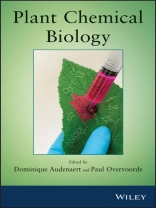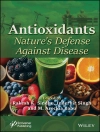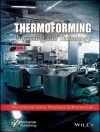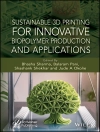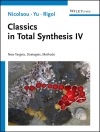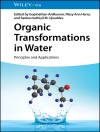Demonstrates how advances in plant chemical biology can
translate to field applications
With contributions from a team of leading researchers and
pioneers in the field, this book explains how chemical biology is
used as a tool to enhance our understanding of plant biology.
Readers are introduced to a variety of chemical biology studies
that have provided novel insights into plant physiology and plant
cellular processes. Moreover, they will discover that chemical
biology not only leads to a better understanding of the underlying
mechanisms of plant biology, but also the development of practical
applications. For example, the authors discuss small molecules that
can be used to identify targets of herbicides and develop new
herbicides and plant growth regulators.
The book begins with a historical perspective on plant chemical
biology. Next, the authors introduce the chemical biology toolbox
needed to perform successful studies, with chapters covering:
* Sources of small molecules
* Identification of new chemical tools by high-throughput
screening (HTS)
* Use of chemical biology to study plant physiology
* Use of chemical biology to study plant cellular processes
* Target identification
* Translation of plant chemical biology from the lab to the
field
Based on the latest findings and extensively referenced, the
book explores available compound collections, principles of assay
design, and the use of new research tools for the development of
new applications.
Plant Chemical Biology is recommended for students and
professionals in all facets of plant biology, including molecular
biology, physiology, biochemistry, agriculture, horticulture, and
agronomy. All readers will discover new approaches that can lead to
the development of a healthier and more plentiful global food
supply.
Tabela de Conteúdo
Preface vii
Contributors ix
part one Introduction 1
1.1 From Herbal Remedies to Cutting-Edge Science: A Historical
Perspective of Plant Chemical Biology 3
Michelle Q. Brown, Abel Rosado, and Natasha V. Raikhel
part Two Sources of small molecules 19
2.1 Compound Collections 21
Reg Richardson
2.2 Combinatorial Chemistry Library Design 40
Robert Klein and Stephen D. Lindell
2.3 Natural Product-Based Libraries 64
Alan L. Harvey
part three Identification of new chemical tools by
High-Throughput Screening 73
3.1 Assay Design for High-Throughput Screening 75
Frank W. An and Jose R. Perez
part four Use of chemical biology to study plant physiology
93
4.1 Use of Chemical Biology to Understand Auxin Metabolism,
Signaling, and Polar Transport 95
Ken-ichiro Hayashi and Paul Overvoorde
4.2 Brassinosteroids Signaling and Biosynthesis 128
Takeshi Nakano and Tadao Asami
4.3 Chemical Genetic Approaches on ABA Signal Transduction
145
Eunjoo Park and Tae-Houn Kim
4.4 Jasmonic Acid 160
Christian Meesters and Erich Kombrink
4.5 Chemical Genetics as a Tool to Study Ethylene Biology in
Plants 184
Yuming Hu, Filip Vandenbussche, and Dominique Van Der
Straeten
part five Use of chemical biology to study plant cellular
processes 203
5.1 The Use of Small Molecules to Dissect Cell Wall Biosynthesis
and Manipulate the Cortical Cytoskeleton 205
Darby Harris and Seth De Bolt
5.2 The Use of Chemical Biology to Study Plant Cellular
Processes: Subcellular Trafficking 218
Ash Haeger, Malgorzata £angowska, and Stéphanie
Robert
part six Target identification 233
6.1 Target Identification of Biologically Active Small Molecules
235
Paul Overvoorde and Dominique Audenaert
part seven Translation of plant chemical biology from the lab
to the field 247
7.1 Prospects and Challenges for Translating Emerging Insights
in Plant Chemical Biology into New Agrochemicals 249
Terence A. Walsh
7.2 In Vitro Propagation 263
Hans Motte, Stefaan Werbrouck, and Danny Geelen
Index 289
Sobre o autor
DOMINIQUE AUDENAERT, Ph D, works in the VIB Compound
Screening Facility at Ghent University. His research expertise
includes assay development, compound screening, and chemical
biology research.
PAUL OVERVOORDE, Ph D, executes his research and teaching
activities at Macalester College (St. Paul, MN), where he is a
professor of biology. He has a longstanding interest in defining
the role of auxin-mediated gene expression during plant
development.
